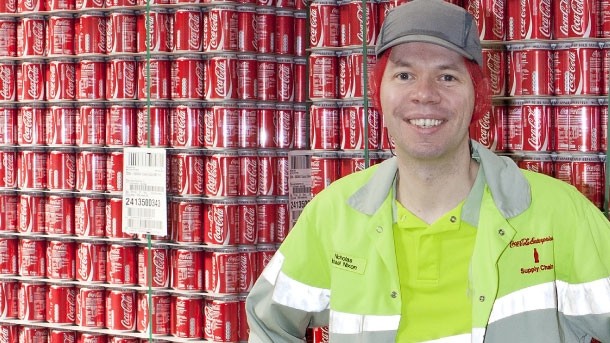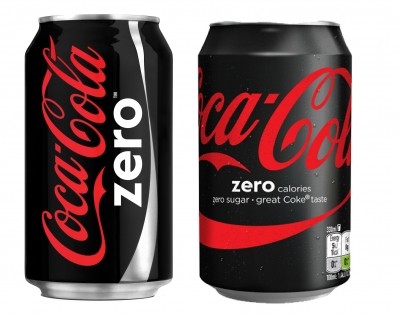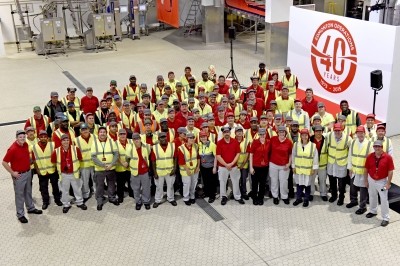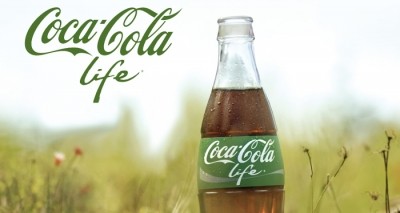CCE’s Milton Keynes site boss’s efficiency aim

This site is the head of Coca-Cola Enterprises’ (CCE’s) growth portfolio. It produces a third of CCE Great Britain’s (GB’s) total canned output.
The growth portfolio is made up of the company’s key growth brands, such as the energy drink Monster, Coke Life and Capri-Sun.
We operate nine lines here and, as well as the products in the growth portfolio, we produce Coca-Cola, Coca-Cola Zero, Diet Coke, Dr Pepper, Lilt, Fanta, Appletiser, 5Alive and Relentless. There are two canning lines, two bag-in-box (BiB) lines and five Capri-Sun pouch lines.
Next year, the site will celebrate 40 years of manufacturing. Most of our lines are more than half the age of the site some are 22 years old and others 28 years old.
More than 60M cases of soft drinks are manufactured here a year and we will need to boost that if we want to stay at the head of the growth portfolio. However, the age of some of the lines can make that difficult to do.
Investment (Return to top)
There has been talk about investment in new lines, but what I would like to see here and what the business would like to see here is still under discussion. At the moment, we're looking to see if we can build a business case for investment to overcome some of the obsolescence challenges we’re set to face, due to the ageing equipment.
As you can imagine, a lot of the equipment has very old programmable logic controllers (PLCs) and, given the pressure we’re putting on the site to grow, that is going to be problematic.
As we increase capacity at the site, we don’t want to be at the mercy of the PLCs or critical equipment failing at the peak of production. So, we're looking at a plan to improve and reduce that, but that’s all I can say about it right now.
Until the time comes for new machinery we must boost our efficiencies in other ways, which we have done repeatedly through improving our overall equipment effectiveness (OEE).
Every business that I’ve worked in, since starting out in the food industry on Unilever’s graduate scheme in 2001, has had slightly different OEE measures. I’ve been at this site for 18 months now and OEE wasn’t really measured.
If we were to take the three measures used most to work out OEE line utilisation, mechanical efficiency and mechanical availability CCE GB's sites generally operate between 74% and 80% OEE, which is very strong.
In all honesty, though, this site is at the lower end of that scale, but we are constantly improving through various initiatives.
In the past 12 months, we’ve seen a 5% growth in efficiency across our production lines. We've managed to achieve that increase despite seeing double digit growth in our stock keeping units. That tells me we have been able to absorb complexity while boosting efficiency.
Changes (Return to top)
Efficiencies have also increased through making simple changes, such as having shorter production runs. As a result of this, we're not storing much end product here and can respond more quickly to peaks in consumer demand.
We’re the only CCE GB site that operates 24 hours-a-day and to ensure we’re able to make the most out of our shifts, I’ve implemented a continental shift pattern. Staff work two 12-hour day shifts, then two 12-hour night shifts, followed by four days off.
Another way we’ve been able to boost our efficiency is through using the skills of our engineers. For instance, they have recently looked at the straw applicators on the Capri-Sun lines. It used to take six hours to maintain one straw applicator during a scheduled overhaul of a Capri-Sun line, or in the event of a breakdown. It’s a very intricate piece of equipment.
The engineers thought six hours was an unreasonable amount of time to change such a small part and created a module subset. This has allowed them to pull an applicator out of a line and put in a pre-prepared ready-to-go part.
They engineered the module in-house and it has saved us half a shift’s worth of downtime for each time the part is changed. We’ve got five Capri-Sun lines and we used to do a monthly changeover on each of them, so we’ve effectively regained two and-a-half shifts a month.
Challenging operation (Return to top)
Capri-Sun is a challenging operation, but we’ve done a lot of work on the lines to try to reduce those challenges. Getting the pouches onto the production line to be filled, for example, means using a bit of science and a lot of luck. It’s hard for the machine to pick a pouch correctly every time and fill it, because they are so thin.
But, the guys here have developed the world’s first live loss recognition system to improve our pouch loss. Just through using the system, which allows us to make minor adjustments to problem areas, we have been able to grow Capri-Sun’s OEE by 2% in 12 months.
One final area of OEE-boosting activity we carry out at this site is around forward risk. We try to spot risks and mitigate them quickly and efficiently. We do this by carrying out failure-preventative assessments, where our engineers walk the lines and look at what could fail next.
We’ve grown our efficiency 3% by stopping issues occurring in this way. When we spot a possible problem, we carry out the work during clean-downs and other times the lines are supposed to be off-line for maintenance.
Because we run seven days-a-week, the site receives a lot of deliveries. Roughly six tankers of sugar are off-loaded at the site each day, as well as other ingredients and fruit concentrates.
Once off-loaded, the ingredients are either stored or moved onto the production lines. To make a product such as Monster, for example, we process the sugar with other ingredients and then make what we call a pre-blended syrup in a 40,000l tank. The pre-blend then goes onto the line to be mixed with water before carbon dioxide is added as it goes into the cans.
It’s a very standard and heavily-automated process, which we use for all of our canned products. Canning is done at a speed of 2,000 cans a minute on one line and 1,500 on another. We can do either 330ml or 500ml cans.
The BiB lines are run in the same way, but we don’t add carbon dioxide or water. The syrup is piped into the bags and then sealed before being boxed and sent out. Five sizes of BiBs are made here, they are: 7l, 12l, 20l and a 250l ‘megabox’. The smaller BiBs are made for the general foodservice sector, whereas the megabox is made for larger customers.
Our cans come from the company Rexam, which is just next door to us. We take up 75% of its output. They’re so close to us, we have a conveyer belt that runs directly from the Rexam factory through to our canning line. We call it the ‘hole-in-the-wall’ and there’s a bridge between the two buildings, which we call ‘no man's land’.
We’ve got roughly 220 staff at this site and have a low dependency on agencies.
Although there are currently discussions about a potential investment in new lines, the site secured £3.5M of investment over a two-year period in 2013. That was used for some corporate social responsibility work and a new tank farm consisting of four 20t capacity tank pairs. There was also £800,000 invested in a new education centre, which opened last October.
The tank farm investment was all about improving efficiency and reducing the dependence on manual handling. It also allows us to manage our bulk loads more safely.
In the future, I want to see efficiency at this site grow further. Whether that’s done through implementing new equipment or getting more out of existing equipment, we need to do that to gain more customers.
See how CCE’s lines are working with increased levels of overall equipment effectiveness in this picture gallery tour of its Milton Keyne’s site.
Personal (Return to top)
NAME: Nicholas Nixon
AGE: 34
JOB TITLE: Plant director
DOMESTICS: Married with three kids
OUTSIDE OF WORK: The kids keep me busy and we’ve got a dog too. I like to play a bit of tennis.
BIGGEST ACHIEVEMENT: Every role I have done has been different, but my time at CCE, boosting efficiency, has been memorable.
Factory facts
LOCATION: 3-7 Delaware Drive, Milton Keynes, MK15 8HD
STAFF: 220
PRODUCTS: Monster, Capri-Sun, Coke Life, Coca-Cola, Coca-Cola Zero, Diet Coke, Dr Pepper, Lilt, Fanta, Appletiser, Minute Maid, 5Alive and Relentless
OUTPUT: 60M cases a year
CUSTOMERS: Retailers and foodservice
SIZE: 15,000m²















